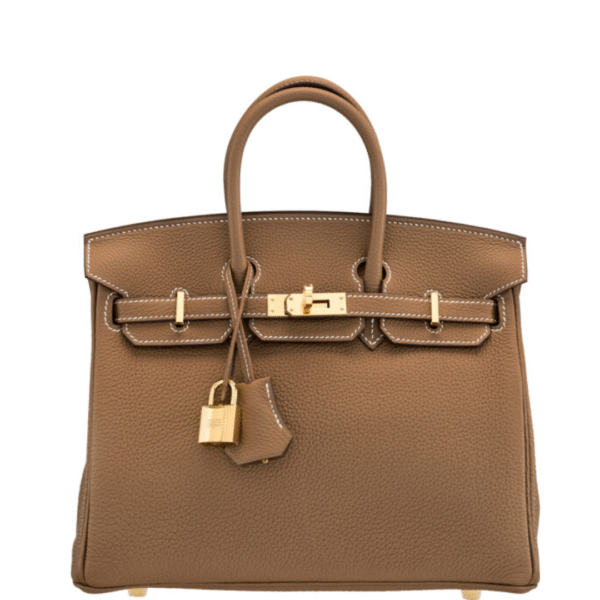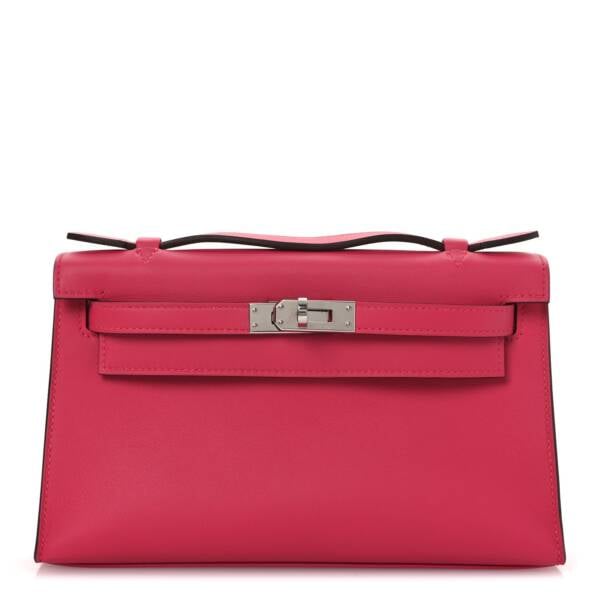Is resale ruining Hermès bag value? We’d like to take a deeper look at what the NYT article is saying and what it’s not, and ask the avid collectors in our community their educated thoughts : The Real Story on Hermès Resale.
But this is a contentious issue, and we’d love to hear your take. Tell us what you think below, and also make sure to take a look at the discussion of some of the leading collectors/fashionistas in our community:
As a long term collector of the brand’s handbags and lover of Birkins, I actually do agree that the resale market has ruined the allure of the Birkin, but not in the same way the author of the NYT article suggests. If a person goes to Europe and is offered a Birkin without being a customer of the brand, they know they can travel back home and sell that bag and make huge amounts of money for it. Prices for Hermès vary so greatly, that even if the person sells the bag for the exact amount it is being sold in the store for, they could be making up to 40% on the transaction. This usually means a person being offered a Birkin, ANY Birkin, is not about to pass up the opportunity when offered the highly coveted item and it fuels the resale market.
As a collector and buyer of other Hermès goods, I get upset when seeing the deluge of bags available through resellers, and it has decreased my desire for its pieces. I feel like Hermès could solve this problem by reducing the price variance between countries, and also making the rules to get their coveted bags similar across the board. The Rolex Daytona is an example used in the article. A steel Daytona is difficult to get everywhere in the world, period. If they had lines outside their store in Switzerland where they would offer them out even to first time Rolex customers, it would then be a fair comparison to what Hermès does to the Birkin.
It’s an interesting article for me, because I never buy from anywhere but the boutique – so I don’t feel super personally invested in the NYT article. However, especially from the completely polarized comments, I think it depends on your viewpoint of the bag. Is it a bag to throw your lunch in, and any old bag will do? Or is it a piece of art? Is it an object of desire – that you appreciate, know the details about, can never find the perfect skin, color, size, hardware combination for you?
If enough people view these bags as art, we need to ask ourselves this question: has art resale hurt the art industry? I’m not familiar with the resale market, but in some ways it seems to only bolster Hermès and its reputation and the desire for it. The auction house involvement especially seems to be a step towards legitimizing these bags as collector items, not utility items. Also, making a $450 Rodeo available for $1200 isn’t exactly making it “available.” Does the used car market hurt the new car market? Paying half price for someone else’s used car is logical, just like it is for a bag. Although the Hermès bag might hold its quality and value longer!
If people view these bags as document holders, lunch boxes, a mere item of utility – it doesn’t matter, because they won’t be buying them anyway!
When a brand like Hermes, which is synonymous with and known for its exclusivity and perceived ‘rareness’ of it’s iconic bags, expands production of its leather goods, the results are bound to be long lasting and unfortunately not all positive. Resellers in my opinion are not helping matters. Let’s take the case of the iconic Birkin that not only held its value once but was considered to be an ‘investment’, expected to hold better value than even gold according to a Wall Street Journal article. The same exclusive and investment bag today is fast losing its allure and value in the resale market due to overabundant inventory both in stores and on resellers’ websites. Yes, increased production of Birkins has made it easier to score a Birkin than ever before and no, its no longer the VIP clients being granted access to this elusive bag but regular and even walk in clients can score one. Of course, when Birkins are this easily available, people feel compelled to buy (how can we say no to a quota bag after all, right? Or can we?). However buying a bag at the spur of the moment most times also means we start having second thoughts about the purchase or we may quickly lose interest because let’s admit it, it’s the thrill of the chase and not the bag itself that made us get that bag in the first place. So what do we do? We turn around, resell the bag and then just as quickly get another easily available replacement Birkin. Many of us have been guilty of this at some time or the other. This creates the problem of excess supply of the Birkins in the resale market. And the cycle continues. Buy, sell, buy again, sell again. And before you know it, a Birkin is on track to potentially becoming just another bag from a high end designer, removed from its stature of being an urban legend.
In my humble opinion, Hermès, consumers and resellers are all responsible for the dip in stature of the once elusive Birkin for the following reasons. Hermès increased production in the hope of increasing profitability; customers who are fickle (and because things are easily available) can buy and sell without losing much; and the resellers are snagging the bags that customers are bored with and then flooding the resale market with them. Look at any reseller’s website. The inventory is not moving. Excess supply has led to lower resale prices. The future is uncertain. The way I see it, savvy customers will not shell out astronomical amounts for a used bag however gently if they can get a brand new one straight from an Hermès store. Having said that, the Birkin and the Kelly are the only bags that even hold their value in the resale market currently. Question is – for how long?
- Chloehadz posted 7 years ago
- last edited 7 years ago
Please login first to submit.
The secondary market can’t affect the pricing! The only thing that can affect the pricing is the supply and demand in the primary market. Hermes has to control this!! If they give so much supply then bags become more available on the secondary market driving down prices and exclusivity. With this Hermes loses because people don’t have to jump through their hoops establishing a relationship to get a coveted Birkin. That makes Hermes lose a lot of money! They need to keep them on short supply! Also the Evelyn has done a great job holding value! A beautiful black pristine 2001 crocodile Kelly just sold st auction this week in.chicago for $12k. I was shocked it went so low! That’s troubling.
- Libby McCarten Andrews replied 7 years ago


















Getting a new bag directly from a boutique remains a challenge. The dollar demand for clients to build their purchases has increased and even after spending thousands on unwanted clothing, watches, plates, a client is not guaranteed the bag they want.
Perhaps getting a birkin is easier today than when that famous Sex In The City episode was made, but getting one in a coveted color, style or size remains a near impossibility except for the true money spending VIPs.
As a major reseller of store fresh bags, the demand is still strong and prices have NOT plummeted for new. People want what they want and will pay the premium. Curated collections of these bags require outright purchases by the reseller and there are few willing to acquire inventory. So the availability of for new, coveted bags is limited.
The used market is another story. It is awash with used bags with clear signs of wear and the prices on these keep going down due to market saturation. Our own experience has shown a continued softening of prices of basic Togo birkins that have been worn.
My experience has been very different! I get offered Bs and Ks and Cs alll the time and and I got a Black K a year and a half ago and a Gold B 5 months ago and a Horseshoe 25B 14 months ago. I have bought very little at the store other than those. I think in 5 years I’ve bought 3 belts, a silver bracelet and a silver tin and a click clack. Also, 2 years ago, I walked right into the Paris store without going thru “the new process” and walked out with a K!
The bottom line is that pricing on the secondary market will always be driven by pricing and supply on the primary market. Resellers do not control that! Only Hermes can. It’s basic economics.
I am certainly not a PB bag celebrity, but I am a long time Hermès customer from another era, before any of you were born, and I will chime in anyway. I will never buy another Birkin, either from a boutique or on the secondary market. The bag hasn’t signified true elegance to me since Hermes’ cover was blown in the 2009 tell all book, “Bringing Home the Birkin.” I refuse to “build a relationship” with a salesperson by buying a lot of stuff I don’t really want. My experience with Hermès in years past was very different. This “relationship” business simply didn’t happen decades ago. Today, this is pure manipulation of the customer on the part of Hermès. Today, lots of people have the money to buy a Birkin. NOTHING stands in the way of Hermès becoming just another tacky status symbol except the artificial aura that Hermès creates themselves. Hermès knows this.
At one time, when you carried an Hermès bag, unless you were in Paris, few recognized it. As soon as counterfeiters, tacky celebrities and the nouveau riche started leveling up from Chanel and LV to Hermès, I knew it was finished for me. I also know that we now live in a time where being understated is considered passé, but seeing celebs and influencers today proudly displaying their floor to ceiling collection of Hermès bags is very odd to me. WHAT are they trying to prove? Anyhoo, while not as bad (yet) as LV, I fear that Hermès is headed in that direction. I am devastated that Anya Hindmarch discontinued the exquisite crocodile Bespoke Ebury bag. Now there is an under the radar bag. I treasure the one that I have (Petrol Blue” and carry it much more frequently than I carry a Birkin. And, I adore the fact that few will ever recognize it. And I do still love the Bolide (once known as the Bugatti), the most functional and practical of all Hermés bags, IMO.